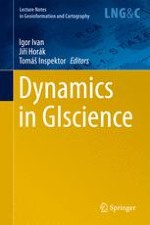2018 | OriginalPaper | Buchkapitel
Methods of Using Self-organising Maps for Terrain Classification, Using an Example of Developing a Military Passability Map
verfasst von : Krzysztof Pokonieczny
Erschienen in: Dynamics in GIscience
Aktivieren Sie unsere intelligente Suche, um passende Fachinhalte oder Patente zu finden.
Wählen Sie Textabschnitte aus um mit Künstlicher Intelligenz passenden Patente zu finden. powered by
Markieren Sie Textabschnitte, um KI-gestützt weitere passende Inhalte zu finden. powered by
